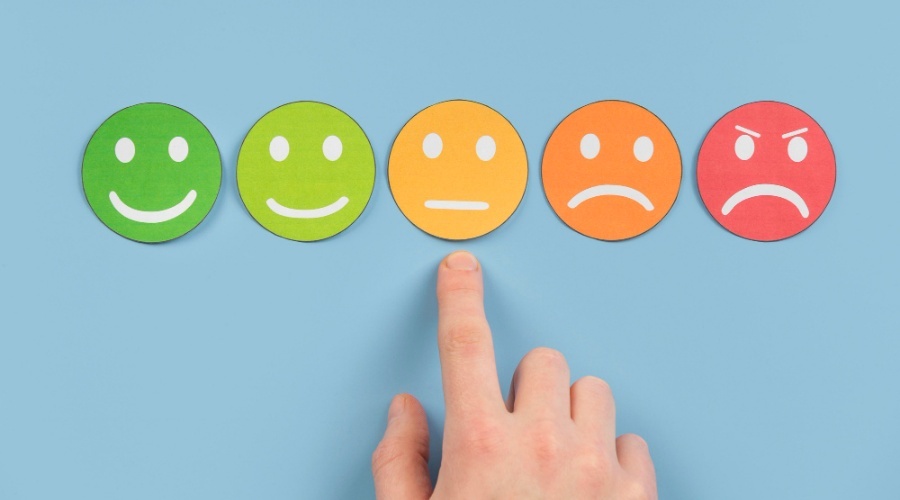
What is Customer Retention? Methods and Objectives to Follow
Marketing and acquisition to acquire new customers are complex and cost-intensive investments. They are necessary expenses for every company in the manufacturing industry and the service sector, which, however, cannot ensure economic success in the long term. From a financial point of view, it is significantly cheaper to retain customers than to keep winning new ones.
Regular customers are loyal customers. That’s only natural. Only those who are satisfied with a product or service will use it repeatedly. Loyal regular customers not only increase the company’s profits, but they can also act as brand ambassadors if you give them the platform to do so.
Satisfied customers communicate positive experiences via social media and share them with friends and acquaintances. They use this to recommend products, services, and online shops. It is, therefore, obvious that customer loyalty is one of the most important corporate goals.
What is customer retention? A definition.
Customer loyalty refers to strategies and measures intended to encourage new customers to use products or services repeatedly. Successful customer retention prevents buyers from migrating to a competitor. It is important that customer loyalty does not start when the first purchase has been made but that an attempt is made to establish a bond after the first contact with the customer.
Why is customer loyalty important? Existing customers are familiar with the company or the brand. These customers use services repeatedly, thereby securing sales and increasing profits. Because they don’t have to be convinced of the product’s advantages through marketing campaigns. Investigations have shown that the expenses for customer loyalty measures amount to less than 20% of the necessary expenses for new customer acquisition. Customer loyalty is, therefore, a sustainable business model and key to the company’s long-term growth.
This is how customer retention methods work.
There is a wide range of customer retention measures. Some are industry-specific, and others are tailored to specific user groups. The following examples will help to develop your strategy and answer the questions: what is customer retention, and how does customer retention work?
Offer unique products and services.
Offering a product, service, or technology that your customers think is superior to the competition is no easy task but rewarding. People buy when they believe they can’t find a better alternative or better value for money.
Newsletters and email campaigns support customer loyalty.
Your company newsletter is a cost-effective and simple way of retaining customers. The same applies to email campaigns, assuming the necessary consent from the customer. An important element here is the personal approach and the filtering of customers according to certain criteria. Efficient CRM offers suitable functions for this. Automated emails are good for reactivating inactive customers.
Automation through tools
What is customer retention? A good customer loyalty program relies on the capabilities of customer service tools. An example is: The CRM records customer activities, from which a support ticket is created. The support team employees use this to transfer the problem to the tool for task management and assign it to the appropriate employee instead of time-consuming personal processing, automation, fast troubleshooting, and a satisfied customer.
Provide opportunities for customer feedback.
Regular customer feedback helps to improve products and services. The information collected must be made available to all teams involved in the value-creation process in the company collaboration tools, central document management, and a social intranet help here.
Take advantage of support opportunities on the right platforms.
Customers are looking for quick help with problems with products and services. Chats or callback offers on the company website are suitable, as are social media channels such as Instagram, Facebook, or Twitter.
Customer loyalty programs ensure customer retention.
What is customer retention? On the one hand, it is important to focus on customers at risk of churn, but on the other hand, loyal customers must be remembered. A bonus system and loyalty bonuses help the company to secure and expand the number of regular customers. Customers who bring comparatively high sales to the company should be particularly rewarded. Premium programs or incentives can be developed for them.
Also read : Best Technique To Find Ideal Customer
The right customer retention strategy through objective data analysis
Good customer loyalty is one of the most important success factors for sales. But what is customer loyalty, and how can customer loyalty measures be recorded quantitatively? Customer loyalty KPIs are a suitable means of doing this. Key Performance Indicators (KPIs) are key figures that indicate whether the company is achieving defined business goals or how it is progressing toward them. Properly selected key performance indicators measure the progress of customer loyalty measures.
However, only a few managers know which KPIs they can use to measure the success of customer loyalty. Good KPIs capture a value based on which the company or sales team can react as quickly as possible. The value can ideally be calculated from identified data that can be controlled and influenced and gives a team – for example, in sales – a clear insight into how projects contribute to achieving company goals.
There are many metrics that you can use to assess customer loyalty. It depends on the appropriate selection of the right KPIs, which can differ from company to company and should sometimes be used industry-specifically. To choose the right metric, there are a few factors to consider:
the observance of the strategic corporate goal,
the selection of KPIs for areas with the highest budget,
the method of data collection (surveys, analysis data from an online shop or CRM ),
the determination of evaluation criteria (periods, milestones),
the determination of evaluation criteria (periods, milestones),
the cost of determining the results, especially in comparison to the expected benefit,
the possibility of deriving targeted decisions from the results.
Considering these principles, a targeted selection of the right KPIs from the ones presented below should be successful and thus answer the question: What is customer loyalty?
Customer Retention Costs (CRC) – customer retention costs
Customer retention costs determine the total expenses that have to be paid to retain an existing customer with the company. A customer base is important to the success of a business. However, the costs of retaining these customers should always be controlled.
The customer retention costs include all expenses for the sales team (marketing measures, support, training, salary). The sum of these expenses divided by the sum of all customers gives the customer retention costs.
Customer Retention Rate (CRR) – customer retention rate
The customer retention rate makes it possible to bind customers to the company over a longer period. The CRR shows how long customers remain loyal to a company or product. The period to be considered must be defined as a month or a year.
Three parameters are included in the customer retention rate:
The number of existing customers at the start of the defined period (Kstart)
The total number of customers at the end of the defined period (Kend)
The number of new customers acquired in the defined period (Knew)
The customer retention rate (CBR) is calculated as follows: CBR=(Kend – Knew) / Kstart) x 100
What is customer retention? The customer retention rate can be used to check how well the measures used to retain customers have worked. The higher the characteristic value for the customer retention rate, the more successful the measures planned for this were.
Customer Churn Rate (CCR) – customer churn rate
The customer churn rate indicates how many customers have lost the total number of customers over a comparative period. CR is particularly important in service companies that link their service to subscription models. Associated with churn is the loss of a contract or recurring service. There are various formulas of varying complexity for calculating the customer churn rate (CCR); in the simplest case, it looks like this: CCR=(number of customers at the beginning of the comparison period – number of customers at the end of the comparison period) / number of customers at the beginning of the comparison period.
Repeat Purchase Rate (RPR) – repeat purchase rate
The repeat purchase rate determines the percentage of customers who have bought a product or used a service more than once in a defined period. The calculation is very simple: dividing the number of customers who have made multiple purchases or used the service by the total number of customers.
A declining RPR can be specifically influenced by reactivating customers through marketing campaigns, product upgrades, or an improvement in service quality. A specific answer to the question: “What is customer loyalty?” can thus be found. Because it is significantly cheaper to reactivate customers than to win new customers through marketing campaigns.
Purchase Frequency (PF) – Number of purchases in a defined period
The purchase frequency is the average number of product purchases or services used within a previously defined period by the company’s customers. A year or, for service providers who offer their offers as subscriptions, a month can be set as a period. The Purchase Count (PF) is determined by the following:
PF=a number of orders in the defined period/number of unique customers. Unique customers are those customers who differ from each other in their customer data. The range of products or services offered by the company, which can differ, for example, due to seasonal fluctuations (e.g., garden products whose sales will be significantly lower in winter than in the other seasons), should be considered when evaluating. A sharply declining or very low purchase frequency should be seen as an alarm signal and requires short-term action. What is customer retention? In this case, the range of products or services may need to be renewed or modified.
Time Between Purchase (TBP) – Time between purchases
The TBP measures the time elapsed between purchases or the use of services. For the key figure to make meaningful statements, the frequency of customer purchases for certain products or services must be known. The key figure plays a small role for service providers who sell their products via subscription contracts since the contract determines the time between purchases.
Redemption Rate (RR) – Redemption rate from loyalty programs
The redemption rate can be used to determine the effectiveness of certain bonus programs for regular customers. The aim is to bind customers to the company through bonus points or loyalty bonuses.
The redemption rate is determined as follows: RR=a number of bonus products redeemed / number of bonus products offered. Various bonus programs can be set up to improve the redemption rate. What is customer retention? For example, an increase in the attractiveness of the bonus product can be used as a reward for regular purchases, or they can be included in a loyalty program.
Customer Lifetime Value (CLV) – Customer Lifetime Value
The customer lifetime value is understood as the profit with a customer during the duration of the customer relationship. The Customer Lifetime Value (CLV) is calculated as follows:
The average purchase value of defined customers is multiplied by the average purchase frequency in a defined period.
The result is multiplied by the average time (customer lifetime) defined by customers who buy in the company.
The result provides the total turnover the defined customers generate for the company.
The expenses for customer acquisition are deducted from this
CLV=(purchase value x purchase frequency) x customer lifetime – customer acquisition costs
A high customer lifetime value answers the question: what is customer loyalty? The customer acquisition costs brought about the success that the customer bought the company’s product or used the service. But only if he uses the services repeatedly over a long period and as often as possible will the proportion of the expenses necessary for customer acquisition be reduced. So CLV is a powerful metric to measure customer retention and marketing profitability.
FAQ
What does customer retention mean?
When creating the project plan, it is particularly helpful to ask yourself important W-questions and record them in writing. Customer loyalty is an important business goal of every company in the manufacturing and service sectors. In the first step, it considers the development of a customer relationship; in the second step, the maintenance of this; and in the third step, the intensification of the bond between the customer and the company.
What is a customer retention strategy?
A customer retention strategy includes activities and measures that successfully serve to prevent existing customers from leaving for a competitor. Customers who have already been acquired are bound to the company or the brand through suitable marketing measures such as newsletters or email campaigns and through continuously available support and bonus programs.
What are customer retention metrics?
Customer retention metrics use analyzed data to measure a company’s and its customers’ interactions—a quantitative evaluation supplements qualitative statements on the success of customer loyalty measures. Important customer retention metrics are, for example, the customer retention costs, the customer retention rate, or the customer lifetime value, which will be explained in this article.
What is the relationship between customer engagement and customer loyalty?
Customer engagement is the interaction between the company and its customers. Through the interactions, the company gains experience. Customers express their opinions about the company’s products or services. The interaction supports product development and thus contributes to customer loyalty.




